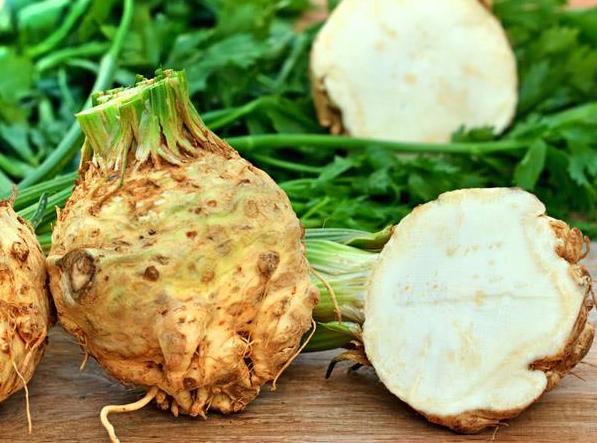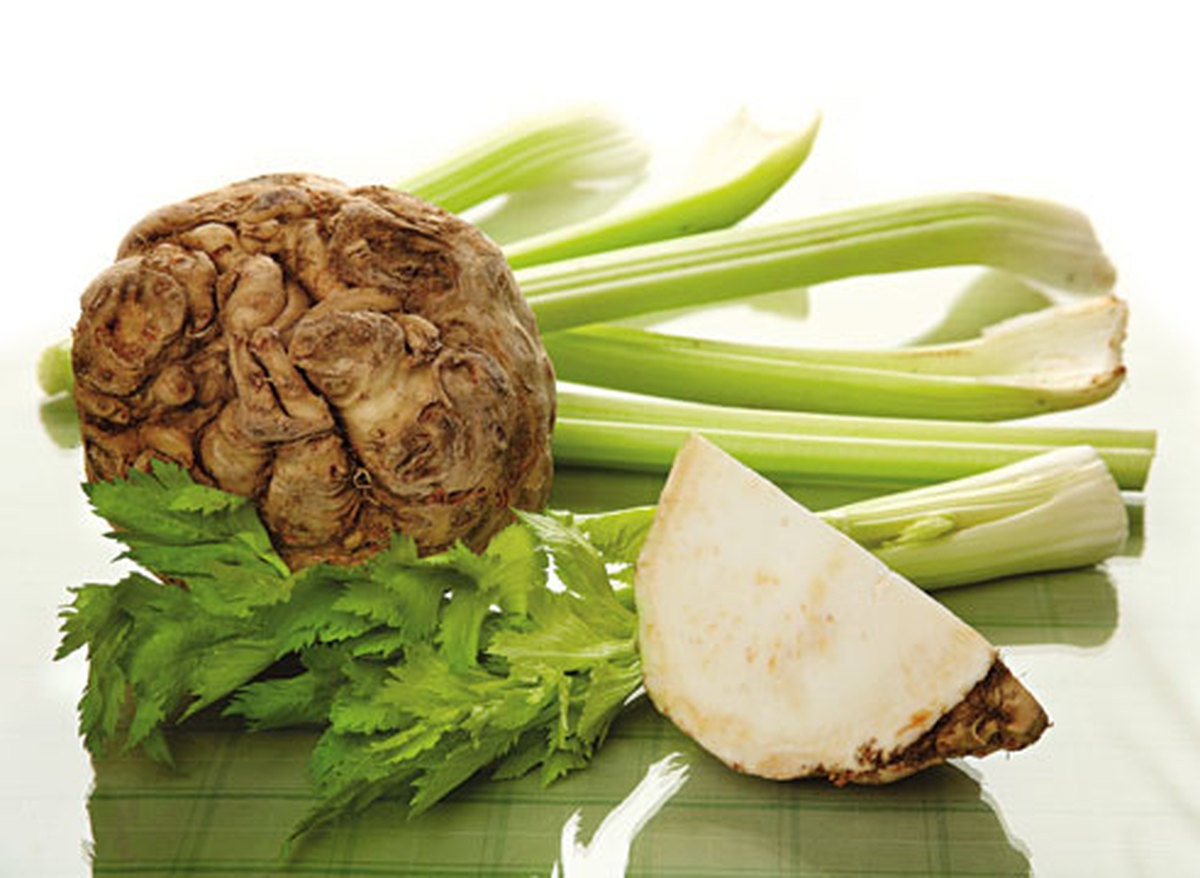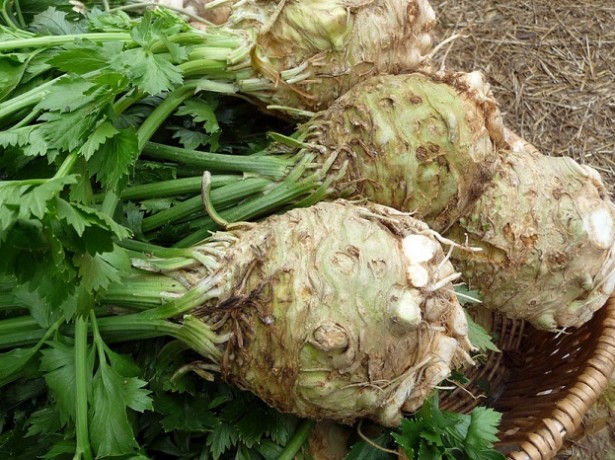 The popularity of celery is growing every year. Perhaps that is why it can be increasingly found in the beds of gardeners. In the eighteenth century, it was considered an ornamental plant, in Europe it was grown on flower beds.
The popularity of celery is growing every year. Perhaps that is why it can be increasingly found in the beds of gardeners. In the eighteenth century, it was considered an ornamental plant, in Europe it was grown on flower beds.
Today it is used for the preparation of various salads, vitamin vegetable juices, smoothies, and also added to soups. Celery contributes to weight loss, regularly taking it for food, you can notice how the extra pounds gradually go away. It also copes with stress relief and reduces fatigue. Celery also has many useful properties, it has a high content of trace elements and amino acids and oils that are beneficial for the human body.
This useful root crop is distinguished by a stretched vegetative period, about two hundred days, therefore it is grown in seedlings, planting it immediately on the bed, you can not get a crop. In order to grow celery, you need to know the basic rules of care. It is advisable to plant celery for seedlings according to the Lunar calendar, many summer residents notice a higher quality of seedlings.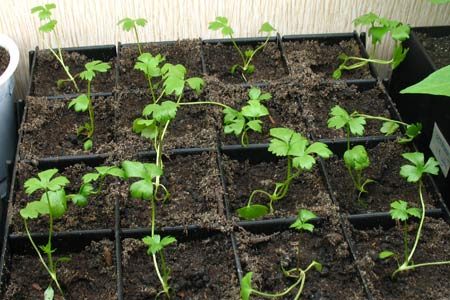
Content
Sowing preparation
Before planting, it is recommended to soak the seeds. To do this, they are placed in a gauze bag and immersed in water for two days, during which time several times the water should be changed. Celery belongs to the essential oil crop, and the seed coat is nourished with oil, which prevents germination. Hatching seeds can be sown in the ground.
A correctly selected soil mixture will improve the quality of the crop, sand mixed with biohumus in equal proportions is well suited. The distance between the seeds should be at least two centimeters. After sowing, they can be poured using a spray gun with warm water, covered with polyethylene and put in a warm place.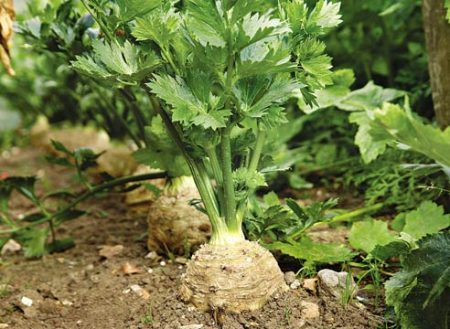
As soon as the first seedlings have appeared, the container with seedlings is moved to where there is a lot of light, the windowsill is perfect, the temperature for growing seedlings should be 16-18 degrees. A picking of young celery seedlings can be carried out when 2-3 leaves appear. It is possible and even necessary to fertilize, using specialized top dressing for this. About two weeks before the planned date of planting, seedlings gradually begin to harden, taking it to the street or balcony, the first time for 20 minutes. Each time, increasing the stay in the fresh air, thus, it will harden and quickly adapt to a new place.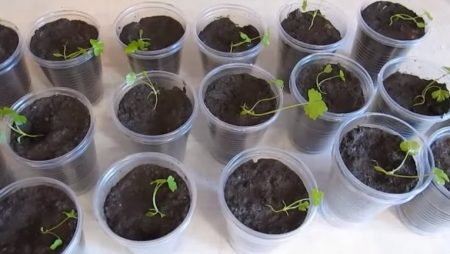
Permanent transfer
Celery is transferred to the bed already strong, by this moment 4-5 true leaves should form on the plant, its height should reach 13 centimeters. After waiting for the normalization of the weather and the absence of frost at night, plants can be transplanted. The soil should warm up, preferably up to 16 degrees. You need to choose a place in advance, a plot of land on which cucumbers, tomatoes, various varieties of cabbage or legumes grew last season is good. It is not recommended to place after greens and carrots.
Wells for seedling of petiole and leaf celery are placed at a distance of 30 centimeters, the root is 40-45 cm, so that the roots do not interfere with each other to grow and develop. Before transferring, seedlings are abundantly watered, so it will be better removed from the container. It is recommended to choose cloudy weather for landing.When planting, add a tablespoon of ash and a little humus to each well, and then water abundantly. If it is not quite warm, the plants are covered with a film at night.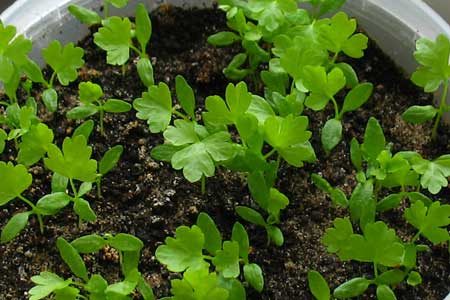
Watering
Celery loves moist soil and reacts poorly to its drying out. Therefore, it must be watered abundantly and regularly. Using 25 m2 of water per 1 m2. If the weather is arid and hot, you need to water the plants every day, preferably in the morning or in the evening, when the air temperature is not so high.
Fertilizers
Already 7 days after transplanting, young seedlings can be fertilized, for the first feeding, grassy infusion is suitable. After another 14 days, an aqueous solution of mullein or bird droppings is used as the second top dressing. Superphosphate can serve as the third; it is introduced at the rate of 30 grams per 1 m2.
Harvested around October, with proper care, the celery root grows quite large.
Favorable days for planting celery on seedlings according to the Lunar calendar in 2018
They begin to plant seeds from the beginning of February and end in late May, thanks to sowing on certain days, you can get stronger and stronger seedlings, which in the fall will please a good harvest.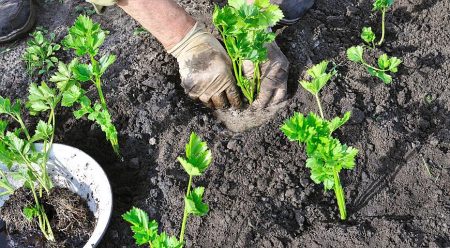
February: 6; 8; 12-13; 21.
March: 6; 8; 17-18.
April: 3; 17-18.
May: from 16 to 18.
Bad days
In February, it is not recommended to sow seeds 1; from 15 to 17.
In March: 5; 13-16; 24.
In April: from 4 to 6; 15-16; 22.
In May: 3-5; eleven; fourteen; 22.

